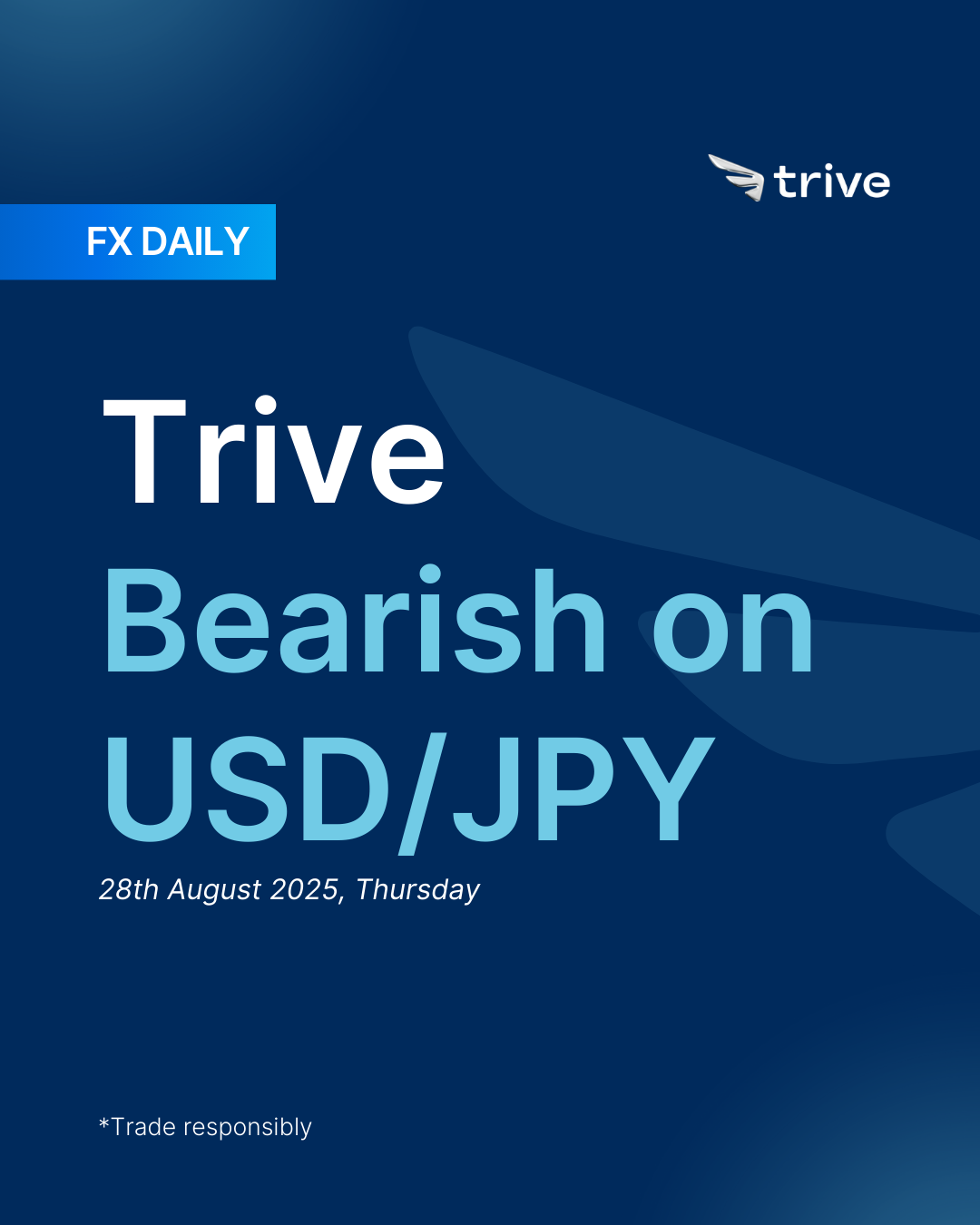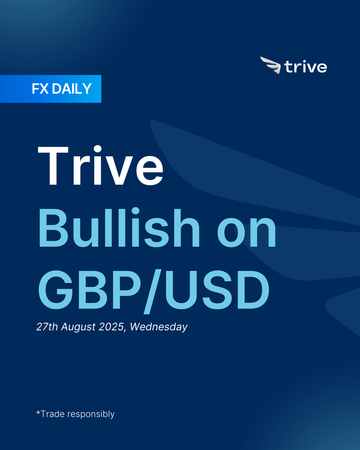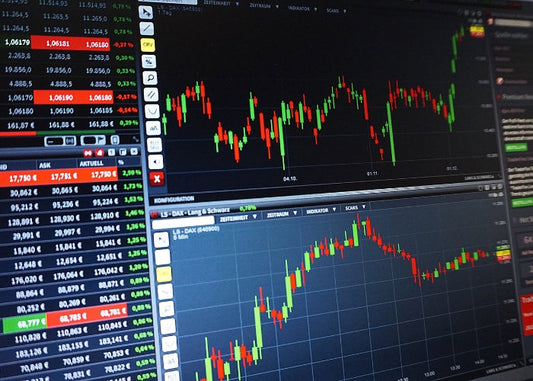FX Daily: Trive Bearish on USD/JPY

The yen rebounded sharply after Powell’s dovish Jackson Hole speech sank US yields, reversing a mid-week dollar rally driven by hawkish PMIs and FOMC minutes. Domestic data was mixed, but hotter core CPI kept BoJ tightening risk alive, while services resilience supports a slow shift toward normalization. With narrowing rate differentials, seasonal repatriation, and less attractive carry, we favor yen strength on dips. Near term, USD/JPY remains yield-driven, but the bias tilts bearish as BoJ optionality and valuation support gradual yen appreciation.
JPY: Another rate hike this year?
The Japanese Yen mirrored the extreme swings in US interest rate expectations this week, making a dramatic round trip from multi-week lows back to strength. USD/JPY started the week under heavy pressure, climbing steadily from 147.00 to above 148.00 as broad dollar strength and wider yield differentials set the tone. The selling pressure on the Yen intensified on Thursday when hawkish FOMC minutes and a stronger-than-expected US Flash PMI sent Treasury yields soaring, pushing USD/JPY to a weekly high near 148.77. The story completely flipped on Friday after Fed Chair Powell delivered a dovish speech at Jackson Hole. US yields and the dollar collapsed, narrowing the US-Japan rate differential sharply, which drove USD/JPY down through multiple support levels to finish near 146.60, erasing the week’s earlier moves.
Japanese domestic data was largely ignored as markets focused on US developments. On Wednesday, trade data showed exports had their biggest drop in four years, normally a negative for the Yen, but it went unnoticed. Thursday’s flash PMIs were mixed, with manufacturing improving slightly but staying in contraction at 47.3, while services softened a little but remained strong at 53.6. On Friday, national core CPI came in hotter than expected, which could have been a hawkish sign for the Bank of Japan, but its impact was wiped out by Powell’s speech later in the day.
From a policy perspective, the Bank of Japan stayed quiet, with no new actions or comments. The only notable development was a senior Japanese lawmaker urging the BoJ to raise rates “sooner rather than later,” though this had no real effect on the market, which remained focused on the Federal Reserve.
The Yen’s performance this week was almost entirely a reflection of US Treasury yields. The sharp rise in yields through Thursday fueled USD/JPY’s rally, while the sudden collapse in yields after Powell’s speech was the sole driver behind the Yen’s powerful rebound. Although the Yen briefly saw safe-haven demand on Tuesday during a sell-off in US tech stocks, its end-of-week rally came alongside a surge in equities, showing that its role as a traditional safe-haven is being overshadowed. For now, the Yen’s value is being dictated far more by rate differentials than by risk sentiment.
The yen’s story is turning more domestic. After being yanked around by overseas yields all week, the late move came with hotter national core CPI and a market that’s slowly conceding the BoJ may need to keep nudging policy toward normal. Exports were soft and the PMI mix wasn’t sparkling, but services stayed resilient and price pressure under the surface looked sticky enough to keep “tightening risk” alive. With the BoJ quiet, the market read through was simple .. normalization is not off the table.
What keeps us positive is the composition of inflation rather than the headline: services-led stickiness plus past wage gains keeps the BoJ’s reaction function tilted away from easing and toward optionality. Into quarter-end, seasonal hedging and repatriation can add a tailwind, and carry looks a touch less attractive when global long end yields cool. We’d lean into yen dips unless incoming data show a clear loss of domestic momentum.
Further out, we stay medium term bullish on the yen but frame it as a grind, not a sprint. Three pillars support that view: first, valuation remains stretched versus Japan’s improved nominal backdrop; second, even modest BoJ steps (communication or balance sheet cadence, not just rates) can shift term premia .. third, Japan’s services cycle is sturdier than a glance at manufacturing suggests. That said, in a clean, risk on, carry friendly world where domestic inflation glides lower on its own, the yen’s upside comes slower.
What flips this view? A sequential cooling in services inflation and wages that softens the BoJ’s tightening optionality, or a BoJ pushback that re-emphasizes patience over normalization. What strengthens it? Another firm Tokyo CPI lead, evidence of wage pass-through sticking into autumn, or signs the BoJ is comfortable letting financial conditions tighten at the margin.
Net-net, we favor a stronger yen path from here, expressed patiently and tactically on dips, with the domestic inflation mix and BoJ optionality doing more of the work than headline risk sentiment.
USD: Powell confirm cut in September?
The US Dollar went through a week of extreme volatility, caught between strong US economic data and a sharp dovish shift from the Federal Reserve. The DXY began the week on solid ground, climbing toward 98.50 in quiet summer trading as markets waited for the Jackson Hole symposium. Momentum turned hawkish mid-week after the release of the July FOMC minutes, which showed most officials were more worried about inflation than employment risks. This view was reinforced on Thursday when the S&P Global Flash PMI came in much stronger than expected, pointing to faster growth and inflation, which pushed rate hikes back into the picture. The dollar jumped to a weekly high near 98.83 as traders quickly priced out Fed easing.
The narrative, however, was overturned on Friday when Fed Chair Jerome Powell delivered a surprisingly dovish speech at Jackson Hole. He highlighted rising risks to the labor market and played down the inflationary impact of tariffs, signaling that a September rate cut was likely. The dollar collapsed in response, erasing its weekly gains and breaking below 98.00, ending the week near 97.55. This marked a sharp reversal driven by the Fed’s sudden shift from focusing on inflation to prioritizing growth risks.
Economic data played a key role throughout the week. Monday’s NAHB Housing Market Index disappointed, falling to 32.0 instead of the expected 34.0. Tuesday’s numbers were mixed, with Housing Starts beating expectations at 1.428M compared to 1.29M, while Building Permits missed forecasts at 1.354M versus 1.386M, leaving little impact on the dollar. On Thursday, volatility surged as jobless claims rose to 235k and the Philly Fed Index dropped to -0.3 against expectations of 7.0, suggesting weakness. But the S&P Global Flash PMI later that day reversed the mood. The Manufacturing index rose back into expansion at 53.3, while the composite reading climbed to 55.4. The commentary leaned hawkish, pointing to rate hikes rather than cuts, which fueled a rally in the USD.
Central bank events dominated the week. The FOMC minutes released Wednesday revealed that most officials saw inflation risks as greater than labor risks, which initially supported the dollar. On the political side, President Trump added pressure on the Fed by calling for Governor Cook to resign over alleged mortgage fraud, raising questions about central bank independence. On Thursday, Fed officials Schmid and Hammack spoke hawkishly, saying they were in no rush to cut rates and were still focused on high inflation, further lifting the dollar. But on Friday, Powell shifted tone entirely, acknowledging labor market risks and describing tariff-related inflation as short-lived. Markets read this as confirmation of a September rate cut. Expectations changed sharply: after Thursday’s strong PMI and hawkish comments, traders had begun questioning whether two cuts by year-end were still realistic. By Friday, markets fully priced in two 25bps cuts by December, with the probability of a September cut jumping from 72% to over 80%.
Geopolitical developments also influenced the dollar. Early optimism around US, Ukraine, and European peace talks faded after Russia launched one of its most intense drone and missile attacks of the war and halted the Druzhba oil pipeline to Hungary. This disappointment gave the dollar some safe-haven support. Meanwhile, a US-EU trade deal framework was reached, though it had little impact on the currency.
Market sentiment shifted dramatically as well. A mid-week sell-off in big technology stocks hurt overall risk appetite, supporting the dollar. By Thursday, the strong PMI data reinforced a “US strength” story, driving the dollar higher. But Powell’s dovish comments on Friday triggered a risk-on rally, sending equities, particularly small caps, sharply higher and dragging the dollar down as markets leaned into expectations of rate cuts.
We saw a classic push-and-pull week: stronger U.S. activity signals lifted rate expectations mid-week, but a dovish turn from the Fed shifted the focus to growth risks and prospective easing. Geopolitics and shifting risk appetite added safe-haven bursts and reversals. In short, markets whipsawed between “higher for longer” and “cuts are coming,” and the dollar followed that pendulum.
We think the near term balance tilts weak bearish for the USD. With markets leaning toward imminent Fed easing, we expect rallies to be sold unless incoming data compels a material repricing of cuts. Brief, headline driven spikes around labor and inflation releases and Fed communications are likely, with risk on phases pressuring the dollar and any growth scare or geopolitical escalation providing only temporary safe haven support. Our base case is to fade strength while front-end yields edge lower.
Looking out a bit further, we see a gradual, uneven softening in the USD as U.S. rate differentials compress and global growth stabilizes. If the Fed follows through with easing and U.S. exceptionalism normalizes, we believe the dollar enters a “sell the rallies” regime into the medium term. That said, we respect the USD’s haven status, stickier inflation or renewed U.S. outperformance could slow or partially reverse the downtrend. Broadly, we prefer staying tactically flexible but structurally biased to a weaker dollar over a multi-month horizon.

USD/JPY 4H
Disclaimer
This material is provided for informational purposes only and does not constitute financial, investment, or other advice. The opinions expressed in this material are those of the author and do not necessarily reflect the views of Trive International. No opinion contained in this material constitutes a recommendation by Trive International or its author regarding any particular investment, transaction, or investment strategy. This material should not be relied upon in making any investment decision.
The information provided does not consider the individual investment objectives, financial situation, or needs of any specific investor. Investors should seek independent financial advice tailored to their individual circumstances before making any investment decisions. Trive International shall not be liable for any loss, damage, or injury arising directly or indirectly from the use of this information or from any action or decision taken as a result of using this material.
Trive International may or may not have a financial interest in the companies or securities mentioned. The value of investments may fluctuate, and investors may not get back the amount they originally invested. Past performance is not indicative of future results.
For more information about Trive International, please visit http://trive.com/int
Additional Information
Investing involves risk, including the potential loss of principal. Diversification and asset allocation strategies do not ensure a profit or guarantee against loss. The content in this material is subject to change without notice and may become outdated or inaccurate over time. Trive International does not undertake any obligation to update the information in this material.
By accessing this material, you acknowledge and agree to the terms of this disclaimer. If you do not agree with these terms, please refrain from using this information.
No comments
Home
Trive
TriveHub





0 comments